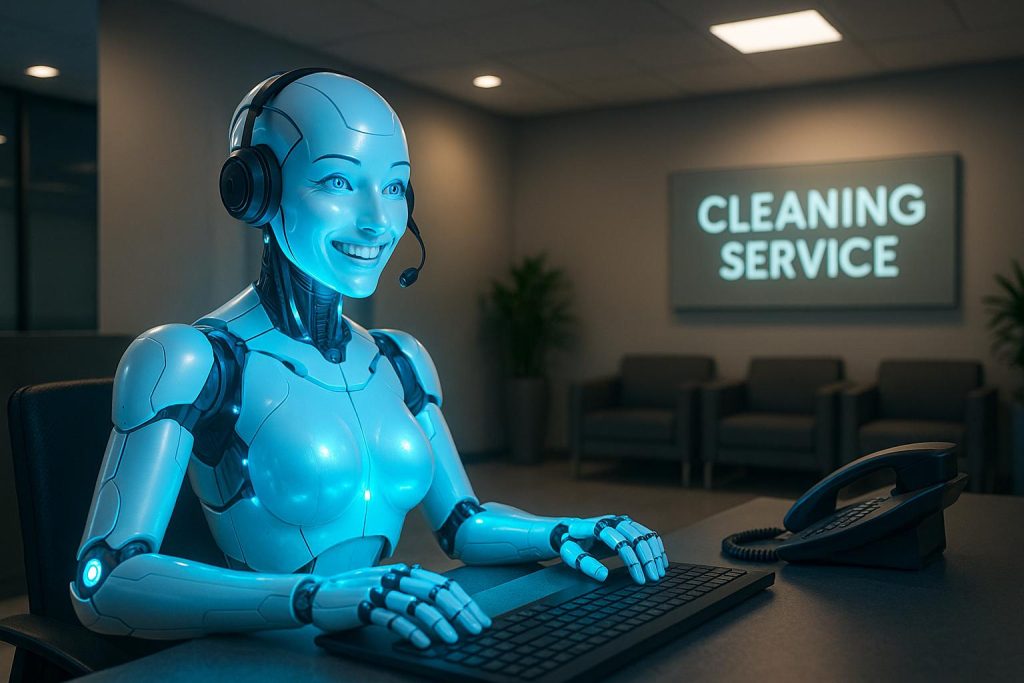Listen to the article
Emerging AI technology is transforming how cleaning businesses manage after-hours calls, outperforming voicemail and call centres in efficiency, scalability, and customer experience to boost bookings and revenue.
In the competitive cleaning services industry, where leads are often urgent and highly time-sensitive, the ability to capture and convert after-hours calls is critical. Customers frequently call outside regular business hours—whether for move-out cleans, post-renovation dusting, or weekend office turnovers—and if these calls go unanswered or hit voicemail, potential bookings are often lost. Traditionally, businesses have relied on voicemail or human call centers to bridge this gap. However, emerging data and industry developments reveal that AI agents present a transformative solution that surpasses both in effectiveness, cost-efficiency, and scalability.
Voicemail, while the cheapest option, falls short in several vital respects. It merely records messages without interaction, often resulting in incomplete or no information being left by the caller, which leads to a very low conversion rate. The absence of immediate responses means many potential customers move on without booking, making voicemail a significant leak in revenue potential. There is no brand management, scheduling capability, or pricing guidance—elements that are essential for fostering trust and ensuring smooth transactions in the cleaning business.
Human call centers improve on these aspects by providing live interaction and the possibility of 24/7 availability, which enhances the customer’s first impression and conversion likelihood—provided the call is answered promptly. However, they come with notable drawbacks, including variable response times dependent on agent availability, inconsistent script adherence, and high operational costs. Quality control and brand consistency depend heavily on ongoing training and monitoring, with room for human error in data capture and lead management. Moreover, call centers face significant scalability challenges during peak call volumes, such as move-out seasons or sudden weather events, often leading to delays or increased costs.
AI agents, such as those deployed by services like MissedCalls.help, address these challenges decisively. They guarantee instant, 24/7 responses with perfect adherence to preset scripts and business rules, ensuring a consistent brand voice and service quality every time. Unlike human agents, AI systems handle surges in call volume effortlessly without the need for overtime or additional staffing, providing unparalleled scalability. Their ability to enforce pricing rules, upsell add-ons like interior oven cleaning, and filter out spam automatically helps protect profit margins and maintain operational efficiency.
Beyond responsiveness and consistency, AI agents excel in automated data capture and integration. They gather structured customer information—such as job type, service requirements, preferred scheduling, and site details—in real time, feeding this data directly into calendaring and customer relationship management systems without the risk of manual errors. This automation removes the administrative burden from staff and ensures that no vital details are missed. Furthermore, AI agents can send follow-up texts with appointment confirmations, preparation checklists, and photo requests, further reducing no-shows and enhancing customer experience.
Comparative scenarios demonstrate the tangible advantages of AI in real-world cleaning contexts. For example, an after-hours move-out cleaning request can be instantly booked with precise pricing and scheduling, while a human agent might miss key upsells. Similarly, for complex post-renovation jobs, AI agents solicit necessary surface details and even request photos to avoid under-scoping—tasks easily overlooked by human operators. AI’s ability to qualify specifics such as access codes or job frequencies in commercial settings also reduces operational friction and costly rescheduling.
Financially, the impact of AI agents is compelling. Businesses receiving a modest number of missed after-hours calls can recover substantial revenue that would otherwise be lost—potentially thousands annually—by converting calls that would have gone to voicemail or endured slow or missed callbacks from busy call centers. Cost predictability and superior return on investment stem from eliminating per-minute call charges and overhead associated with human labor and training.
Industry experts and operational analyses support these findings. Research from consultancy McKinsey highlights AI’s role in reducing customer service costs while enhancing satisfaction by efficiently handling higher call volumes with fewer staff. Similarly, studies point to AI’s operational reliability during peak demand periods and note the significant reduction in administrative overhead. While human agents remain valuable for handling complex or sensitive interactions that require empathy, the consensus suggests AI agents are superior for managing routine, high-volume inquiries with consistency and cost-effectiveness.
For cleaning businesses considering the transition, a phased 30-day implementation plan can facilitate a smooth switch from voicemail or call centers to AI-agent systems. This includes routing after-hours calls, configuring service zones and pricing, automating follow-ups, and tracking performance metrics—allowing businesses to scale AI usage progressively based on results. Hybrid models also offer a balanced approach, where AI manages routine calls, and complex cases are escalated to human operators, ensuring comprehensive coverage without sacrificing quality.
In summary, while voicemail represents the minimal investment with significant revenue risks and call centers offer improved conversions at a higher and variable cost, AI agents emerge as the optimal solution for cleaning companies. They combine immediate, consistent, and scalable customer interactions with sophisticated data capture and automation, ultimately safeguarding ad spend and maximising booking conversions across all hours.
📌 Reference Map:
- Paragraph 1 – [1], [4]
- Paragraph 2 – [1]
- Paragraph 3 – [1], [7]
- Paragraph 4 – [1], [5], [7]
- Paragraph 5 – [1], [7]
- Paragraph 6 – [1], [7]
- Paragraph 7 – [1], [3], [5]
- Paragraph 8 – [1], [4]
- Paragraph 9 – [1], [2], [5], [6]
- Paragraph 10 – [1], [7]
- Paragraph 11 – [1], [5], [7]
Source: Fuse Wire Services


